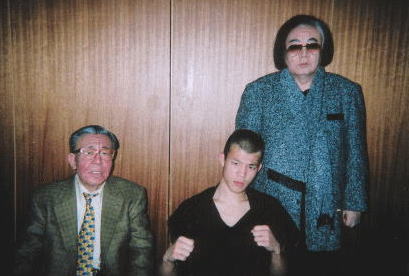The Net Neutrality debate rages on, and I’m sure every reader is enough aware of the basics so that I need not summarize. My friend Younghusband over at the Cominganarchy blog made a brief post earlier in support of Net Neutrality. I began to write my own thoughts as a comment there but then thought, why not post it here instead?
Without Net Neutrality the hopes for future innovation, future disruptive technologies in the future are dim.
The fundamental misunderstanding about Net Neutrality is the nature of what some of the network providers really want to do when it’s gone. Net freedom advocates have been trying to paint a picture of a world in which the network providers are allowed to charge content providers for higher quality service to that network’s customers and to then throttle down the speed and reliabilty of servers that have not paid up. Unfortunately, there is a general misconception that this is how it already works, because content providers must pay for their bandwidth.
Let me be clear- this is NOT how it works now. Yes, when you connect a server to the Internet you pay for the size of the connection you get, for the amount of data that you send. But this payment is only on the server end, and while it may be expensive if you send alot of data, it is also a single payment (leaving out regional mirrors or media distribution services like Akamai or whatever).
What network providers would like to be able to do is force servers to pay not only at their end, but also to each individual ISP, for premium access to that ISP’s customers. This would mean that, say, Youtube would have to pay not just for the fair cost of their presumably massive network connection, but also pay each and every single ISP, AT&T, Comcast, AOL, SBC, Earthlink if they wanted all Americans to be able to access their service.
Now imagine how much worse it gets in an international environment. Youtube is an American company, primarily aimed at Americans, and yet it has become very popular in Japan despite not even having a Japanese language interface. If a so called “tiered internet” were standard, then Youtube would have had to pay KDDI, NTT and YahooBB to guarantee access to the Japanese market before they could have become popular. But their popularity here was unexpected and unmarketed, spread by word of mouth. This sort of serendipitous success that has made the Internet what it is today would be no more.
There would be no more underground successes like, in reverse chronological order, Youtube, Myspace, iTunes, Friendster, Google, Napster, Yahoo. Everything would have to have its target market planned out in advance. For a startup without the budget to pay for access to every local ISP in the world, they would have to identify in advance their projected customer base through marketing surveys, demographic analysis, and the other insults and discrimination towards consumers that we as a society have become used to over the decades. It would be the death of grassroots popularity and a return to the centralized marketing driven media hegemony of the past, and it would be an awful tragedy.


